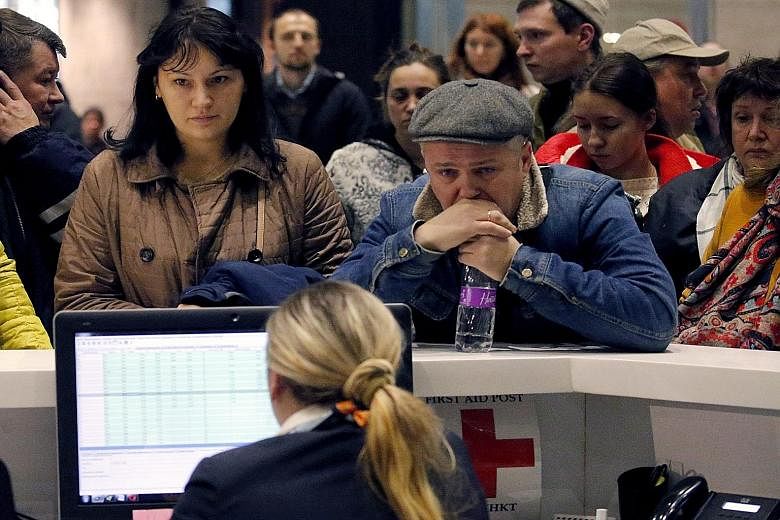CAIRO • The deadly passenger plane crash in Egypt yesterday was most likely due to a "technical failure", according to the head of a committee monitoring the event and security sources, even as Islamic State in Iraq and Syria (ISIS) claimed that the aircraft was shot down.
The crash of the plane, operated by Russian airline Kogalymavia, was due to a technical fault and it was not shot down, pilot Ayman Al-Mokadem, who is heading a committee to monitor the event, was quoted by state-run Ahram online news website as saying. Russian news reports also said that preliminary details gave no indication that the plane was shot down.
But the Egyptian aviation ministry and Russia's transport ministry said the reason for the crash has not yet been determined.
Russia's Investigative Committee said it was checking fuel samples from the last refuelling stop of the plane, in the Russian city of Samara.
The Russian Embassy in Cairo said it had been told by Egyptian officials that the pilot had been trying to make an emergency landing at El-Arish, about 100km from where the plane went down. Aircraft crew members had previously complained about the state of one engine, the RIA Novosti agency reported.

Kogalymavia said it saw no grounds to blame human error for the crash. Russian news agencies RIA and Interfax cited an airline spokesman as saying that the pilot had 12,000 hours' flying experience. She also said that the plane had been fully serviced.
An authoritative Sweden-based aviation tracking service said the aircraft, having made an apparently smooth take-off, lurched into a rapid descent shortly after approaching cruising altitude. The plane was descending at about 1,800m per minute before communication with the flight was lost, 23 minutes after leaving Sharm el-Sheikh International Airport, according to Flightradar.com.
The plane had reached a cruising altitude of 9,448m, Egypt's Civil Aviation Ministry said in an e-mailed statement. At that altitude, it is "very unusual for something to happen", Mr Paul Hayes, director of safety at Ascend Worldwide, a London-based company that gathers air data for insurers, said.
An Egyptian security officer at the scene told Reuters by telephone: "I see a tragic scene. A lot of dead on the ground and many who died while strapped to their seats. The plane split into two - a small part on the tail end that burned and a larger part that crashed into a rock."
Relatives and friends of passengers on board the ill-fated flight were left reeling in St Petersburg after news broke of the crash.
Airport officials tried to keep things calm with an announcement asking all those waiting to meet those on board the ill-fated flight to "come to the information stand". They were then ushered onto buses and taken to a hotel where psychologists and doctors were waiting. Six ambulances were waiting at the airport.
Speaking at a news briefing in the central Asia republic of Kyrgyzstan, US Secretary of State John Kerry described the crash as a tremendous tragedy and loss.
REUTERS, AGENCE FRANCE-PRESSE, BLOOMBERG, NEW YORK TIMES

